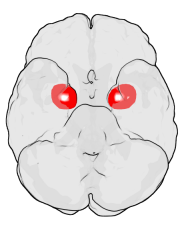
Photo from wikipedia
Adolescents experiencing anxiety or depression exhibit cognitive biases favoring the processing of negative emotional information. It remains unknown whether common neurobiological processes underlie these biases across anxiety and depression. Here,… Click to show full abstract
Adolescents experiencing anxiety or depression exhibit cognitive biases favoring the processing of negative emotional information. It remains unknown whether common neurobiological processes underlie these biases across anxiety and depression. Here, brain imaging was acquired from typical, anxious, and depressed adolescents during an emotional-interference task. Functional connectivity patterns were assessed while adolescents were cued to attend to or ignore faces. Results revealed a shared dimension of anxious and depressive symptoms was associated with reduced changes in connectivity patterns between conditions in which adolescents needed to ignore or attend to fearful faces. These findings were exclusive to fearful faces and observed only for functional connections with a primary face-representation area (fusiform gyrus). Results suggested a failure to flexibly adapt communication patterns with sensory-representation areas in the presence of negative emotional information, which may reflect a common neurobiological mechanism explaining biases favoring such information shared among adolescent anxiety and depression.
Journal Title: Clinical Psychological Science
Year Published: 2022
Link to full text (if available)
Share on Social Media: Sign Up to like & get
recommendations!